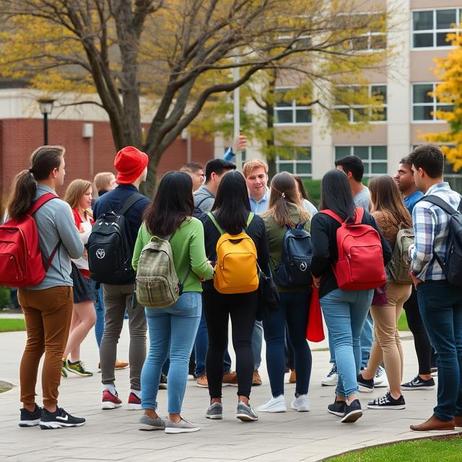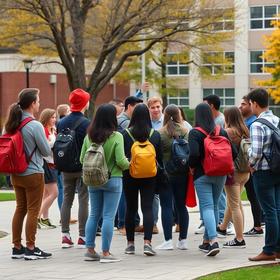Why Attend Community College? — A 2025 Perspective
For decades, community colleges have served as vital connectors between high school and higher education, offering accessible, flexible, and cost-effective pathways for diverse learners. As we step into 2025, the reasons to attend a community college remain compelling—and in many respects, even stronger. Below is an updated look at the key arguments for choosing a community college, backed by the latest data, trends, and real-world examples.
1. Affordability Remains a Core Advantage
One of the most powerful draws of community colleges is their cost—especially compared to four-year institutions.
In the 2024–25 academic year, average tuition and fees at U.S. community colleges stood at about $4,050, accounting for roughly 20 percent of a student’s overall budget (tuition, books, housing, and living costs).
More precisely, in 2025, in-state public two-year college tuition averages around $5,099, while out-of-state tuition averages $8,784. Community College Review
Some institutions report lower in-district rates: for example, in-district tuition and fees average approximately $3,598 annually.
Because community college students often live at home and commute, many avoid the high costs of room and board associated with four-year colleges.
In contrast, four-year public universities in 2024–25 carried average “sticker” prices of nearly $29,900 per year (before financial aid) for in-state students. Bestcolleges.com Thus, for many families, opting for community college for the first two years can save tens of thousands of dollars.
2. Broad Reach & Student Demographics
Community colleges remain central in the U.S. higher education ecosystem—serving students from multiple age groups, backgrounds, and goals.
According to AACC’s Fast Facts 2025, community college students constitute 39 percent of all U.S. undergraduates.
Nearly half (49 percent) of Hispanic undergraduates attend community colleges.
Enrollment is recovering and growing: spring 2025 saw overall postsecondary enrollment increase by 3.2% year over year, with community colleges leading growth.
Freshman enrollment is up over 6%, and overall community college enrollment has increased more than 4% in recent cycles.
Dual enrollment (high school students earning college credit) continues to rise: recent data show high school dual enrollments account for roughly 21% of total community college enrollment. Watermark Insights
These figures underscore that community colleges serve not only traditional students but also nontraditional learners, working adults, returning students, and early high school college-goers.
3. Flexibility, Access & Supportive Structure
Community colleges are typically open-access institutions, meaning that admission is less selective and more inclusive. This structure further amplifies their appeal.
Many community colleges support students with part-time enrollment, evening or online classes, stackable credentials, and certificate pathways. In 2025, there is particular momentum behind short-term credentials, with younger students increasingly embracing credential-based routes. league.org
Because of their community orientation, these colleges often provide wraparound support—tutoring, career counseling, advising, child care, and transportation services—which can be essential for first-generation or low-income students.
Open access also means lower barriers for entry: students who may not have had strong high school preparation or high test scores still can begin at a community college and build success.
Many states and systems are expanding “Promise” programs or tuition waivers for community college students, further lowering cost obstacles.
4. Transfer Pathways & Articulation Agreements
A common strategy is the “2 + 2” model: complete general education at a community college, then transfer to a four-year institution to finish a bachelor’s degree. In 2025, those pathways are increasingly structured and honored.
Nearly 1.2 million students transferred in 2024, accounting for 13% of non-freshman undergraduates—a number that has grown steadily since 2020. Inside Higher Ed
Many states have built or strengthened articulation agreements guaranteeing that credits from community colleges transfer into state university systems without loss.
Some community colleges are now offering bachelor’s degrees themselves—especially in applied fields—blurring the line between two-year and four-year institutions.
To see an internal example of educational pathways and school profiles, one may refer to resources on BoardingSchoolReview.com, where comparative profiles of secondary to postsecondary transitions are analyzed.
For many students, this route allows them to stay local, save money, and still end up with a four-year credential—or even a professional degree.
5. Workforce Alignment & Economic Returns
Community colleges often serve as engines for regional workforce development and rapid employment outcomes.
Many community colleges align curricula with local industry needs: healthcare, cybersecurity, advanced manufacturing, renewable energy, logistics, AI, and skilled trades.
Because certificate and associate programs tend to have shorter durations, students may enter the job market more quickly and with less debt.
Employers increasingly value these credentials. In many sectors, what matters more is ability, certifications, and hands-on skill rather than just degree pedigree.
In 2025, investment in short-term credentials is accelerating: the credential output of colleges rose by 10.3% in spring 2024 over the previous year.
By blending academics with career preparation, community colleges offer a practical route to gainful employment.
6. Resilience, Innovation & Growth Trends
Community colleges are evolving—and adapting to 2025 demands in education, labor, and public policy.
After pandemic-era disruptions, community colleges are rebounding: fall 2024 enrollments were stronger than initially projected.
Many programs emphasize hybrid and online learning modalities; flexible scheduling is standard.
Colleges are innovating by offering microcredentials, short-term certificates, and stackable credentials that ladder into longer credentials.
Some institutions are dropping “community college” from their names, signaling shifts toward more expansive academic missions. For example, Houston Community College approved a name change to Houston City College in 2025.
These changes reflect the dynamic nature of the sector and its willingness to evolve with student and labor market needs.
7. Case Study: Austin Community College (ACC)
ACC illustrates many 2025 trends in practice. Following the implementation of a free-tuition pilot for recent high school graduates, enrollment grew by approximately 15% for fall 2025—adding around 4,600 students.
To accommodate growth, the college is hiring adjunct faculty, adding 500 class sections, and expanding program access.
ACC’s approach underscores how lowering financial barriers and aligning community strategy can drive student demand—and how community colleges can scale responsively to meet it.
8. Considerations & Caveats
Attending community college is not without challenges:
Students must be diligent about credit transfer and articulation: improper course choices or misaligned curricula can result in lost credits or delays.
While tuition is low, living costs, transportation, and childcare expenses can still be significant.
Some programs may suffer resource constraints—less small-lab infrastructure or lower faculty-to-student ratios in certain specialties.
Policy changes—e.g. in FAFSA, state funding cuts, or support services—can affect student success.
Still, for many students and families, the benefits overwhelmingly offset these caveats when navigated strategically.
Conclusion
In 2025, the case for attending community college is as strong as ever: affordability, accessibility, flexibility, transferability, and workforce alignment converge to make it a wise and practical choice for many learners. As enrollment rebounds and innovation accelerates, community colleges continue evolving to meet changing student, employer, and societal needs.
For students and families, the core question becomes not “Why attend community college?” but “Which community college will maximize my return on investment?” By understanding credit pathways, money-saving programs, and regional employment trends, students can make the route through community college their strongest launch into higher education or a career.
Whether starting local, saving money, pivoting careers, or stacking credentials, community college offers a versatile and resilient platform for educational and economic mobility.














